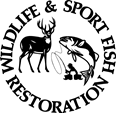Lake Quitman 2021 Survey Report  (PDF 1.3 MB)
(PDF 1.3 MB)
If you have difficulty accessing the information in this document, contact the TPWD Inland Fisheries Division for assistance.
Lake Quitman - 2021 Survey Report
Prepared by Evan Cartabiano and Kevin Storey
Inland Fisheries Division - Tyler North District
This is the authors' summary from a 24-page report. For a copy of the complete report, use the download link in the sidebar.
Fish populations in Lake Quitman were surveyed in 2021 using electrofishing, trap netting, and tandem hoop netting. Historical data are presented with the 2021 data for comparison. This report summarizes the results of the surveys and contains a management plan for the reservoir based on those findings.
Reservoir Description
Lake Quitman is an 814-acre impoundment located in Wood County, Texas, on Dry Creek, a tributary of the Sabine River. It was constructed by Wood County for recreation and flood control. Habitat consists primarily of natural shoreline, boat docks, and emergent aquatic vegetation. Water hyacinth is also present in small quantities.
Management History
Important sport fish included Largemouth Bass, White Crappie, and Channel Catfish. Florida Largemouth Bass were initially introduced in 1980 and the most recent stocking was in 2020. Efforts to mitigate the loss of fish habitat due to reservoir shoreline development included planting water willow in 2013 and 2014. Treatment efforts for water hyacinth have included physical removal as well as aquatic herbicide applications.
Fish Community
- Prey species: Threadfin Shad and Gizzard Shad were present, and most Gizzard Shad were available as prey to most sport fish. Electrofishing catch of Bluegill was high, and most fish were less than 5-inches long.
- Catfishes: The Channel Catfish population exhibited an increasing number of fish available to anglers. Fish condition was poor.
- Largemouth Bass: Largemouth Bass were present; however, few legal-size fish were available to anglers. Fish condition was moderate.
- White Crappie: White Crappie were abundant with legal-size fish available to anglers. Most crappie reached legal size within three years.
Management Strategies
- Conduct general monitoring surveys with trap nets, baited tandem hoop nets, electrofishing, and creel surveys in 2025-2026.
- Access and vegetation surveys will be conducted in 2025.
- Seek opportunities and partners for vegetation restoration.
- Continue biennial stocking of Largemouth Bass.
- Inform the public about the negative impacts of aquatic invasive species.

Performance Report as required by Federal Aid in Sport Fish Restoration Act Texas Federal Aid Project F-221-M-3 Inland Fisheries Division Monitoring and Management Program